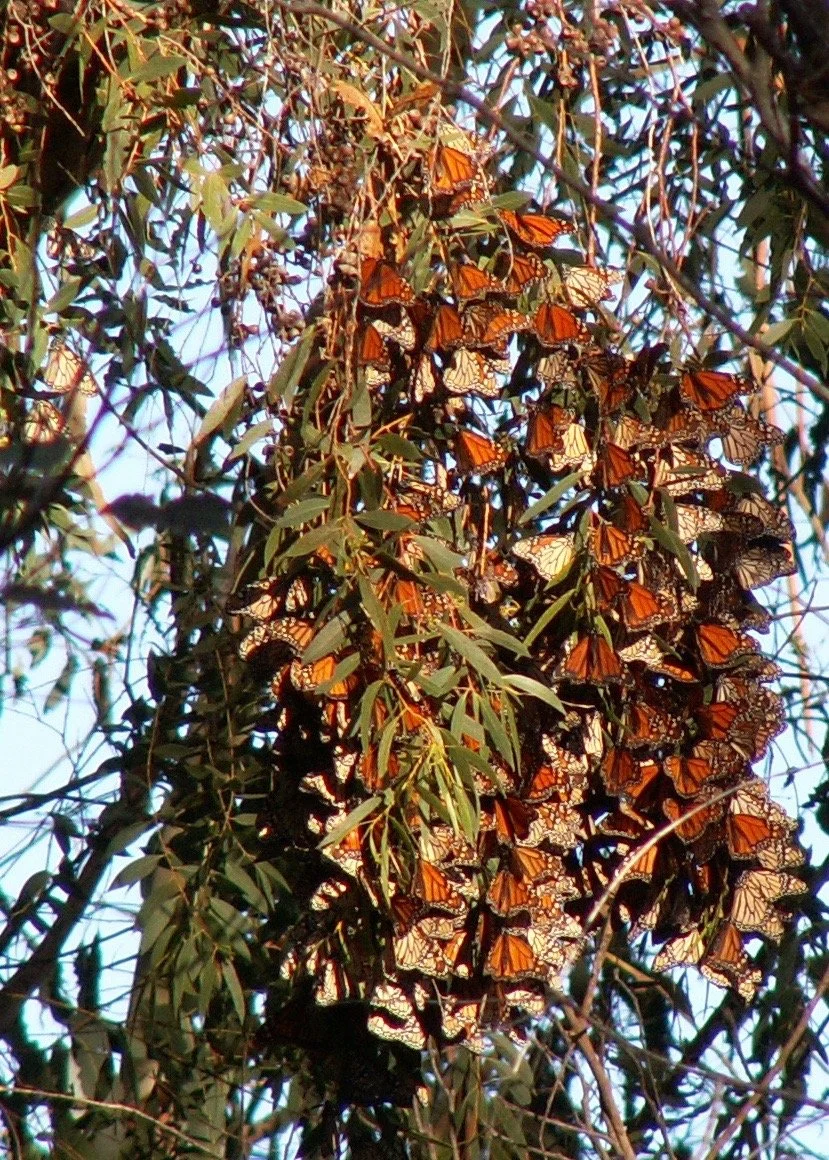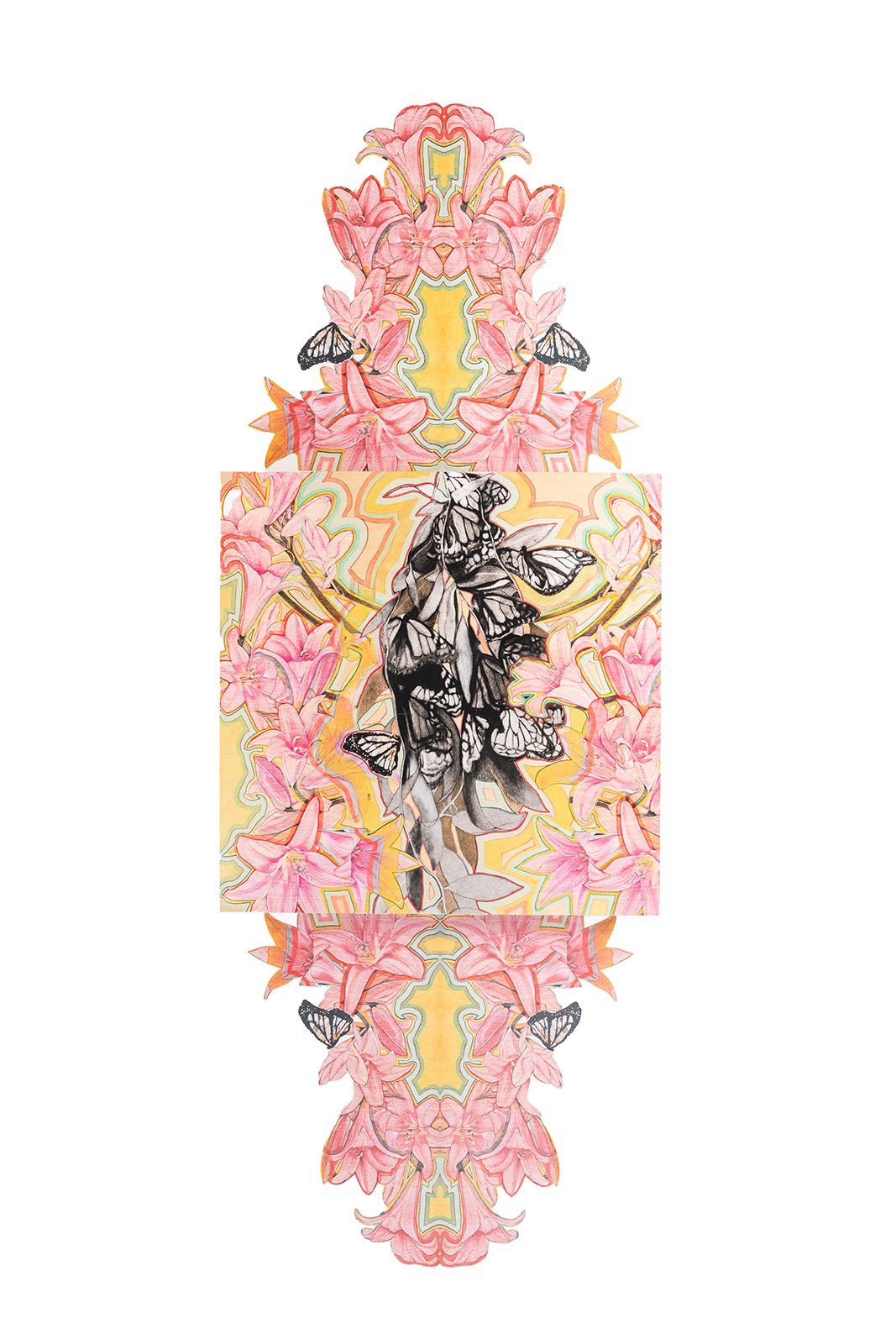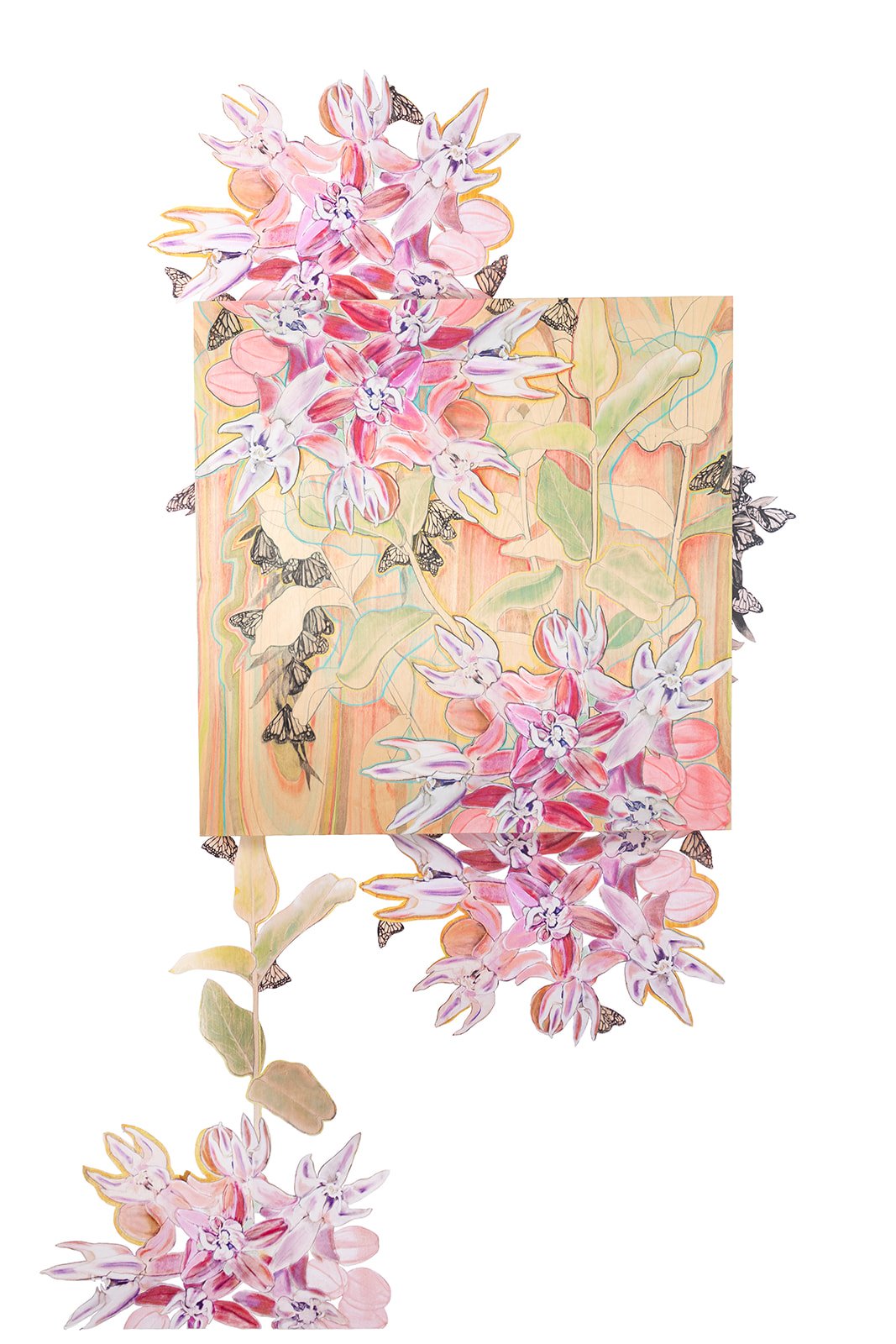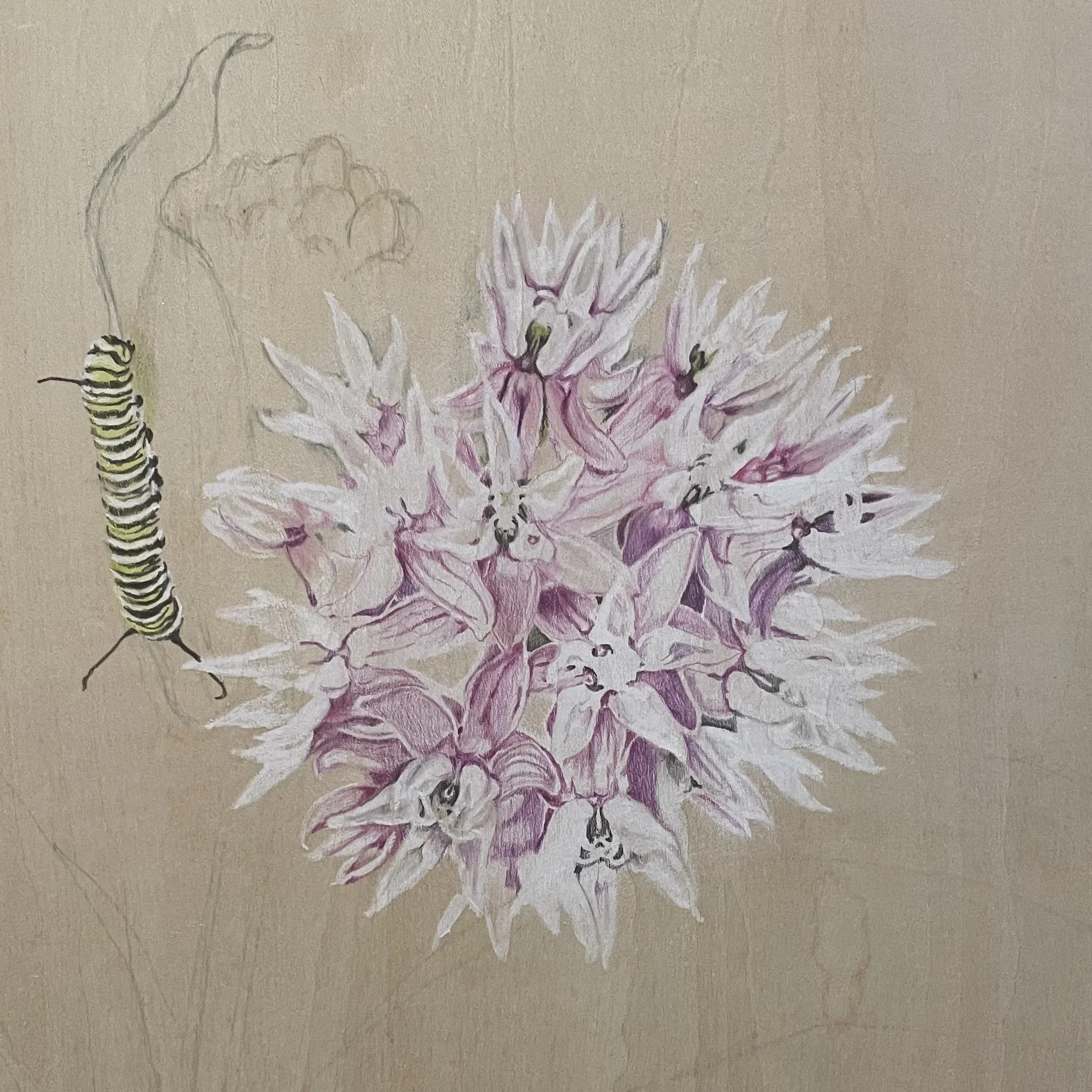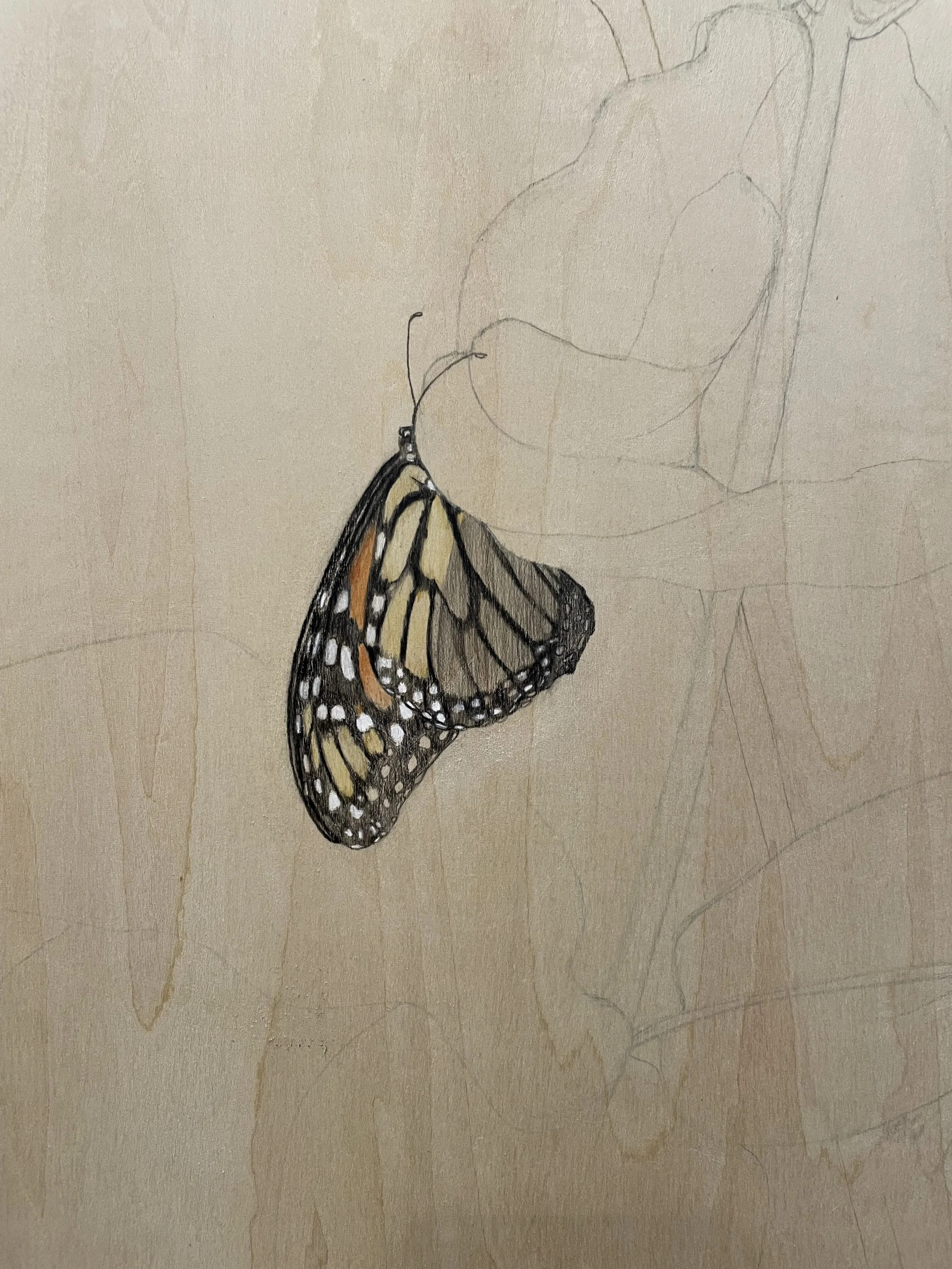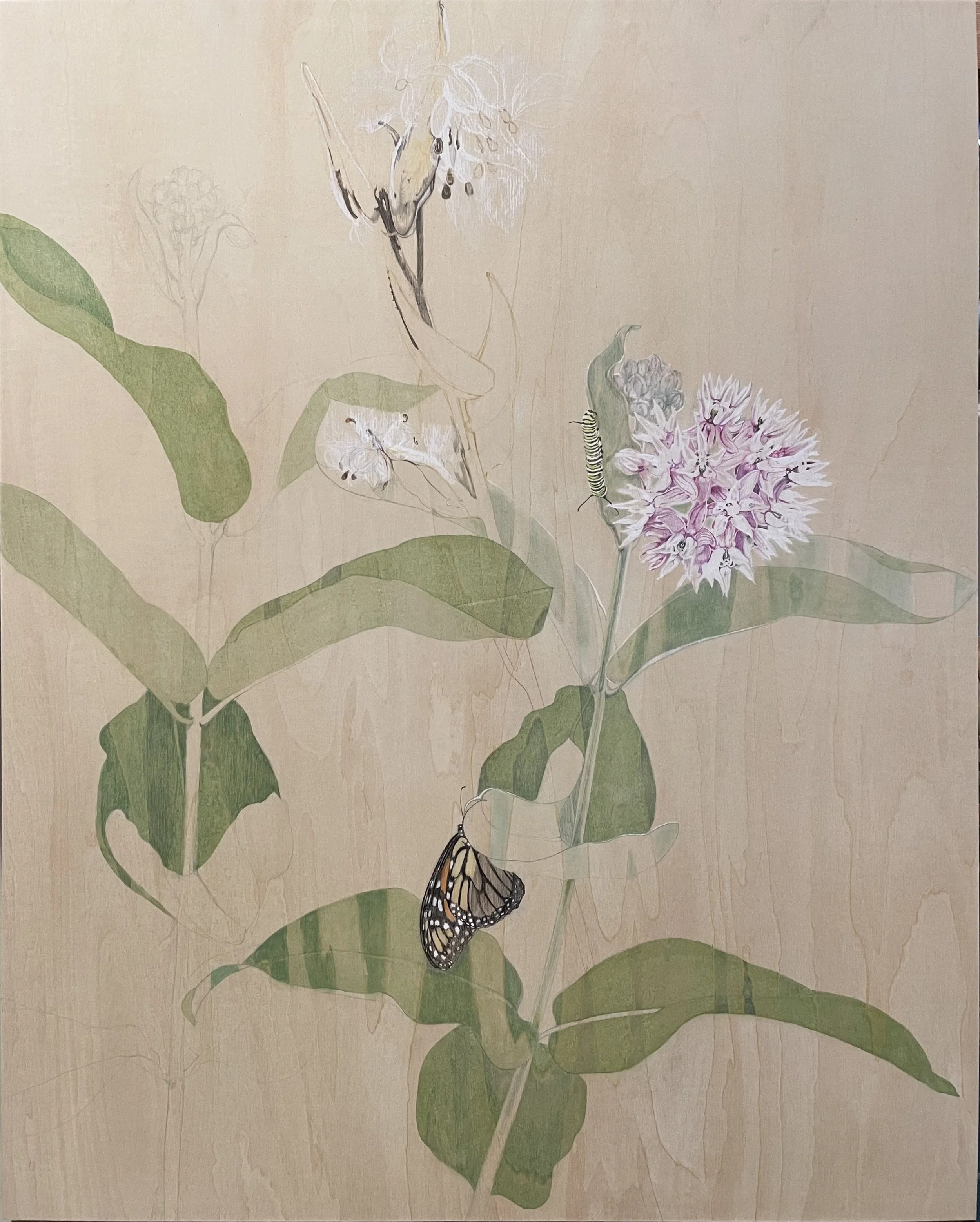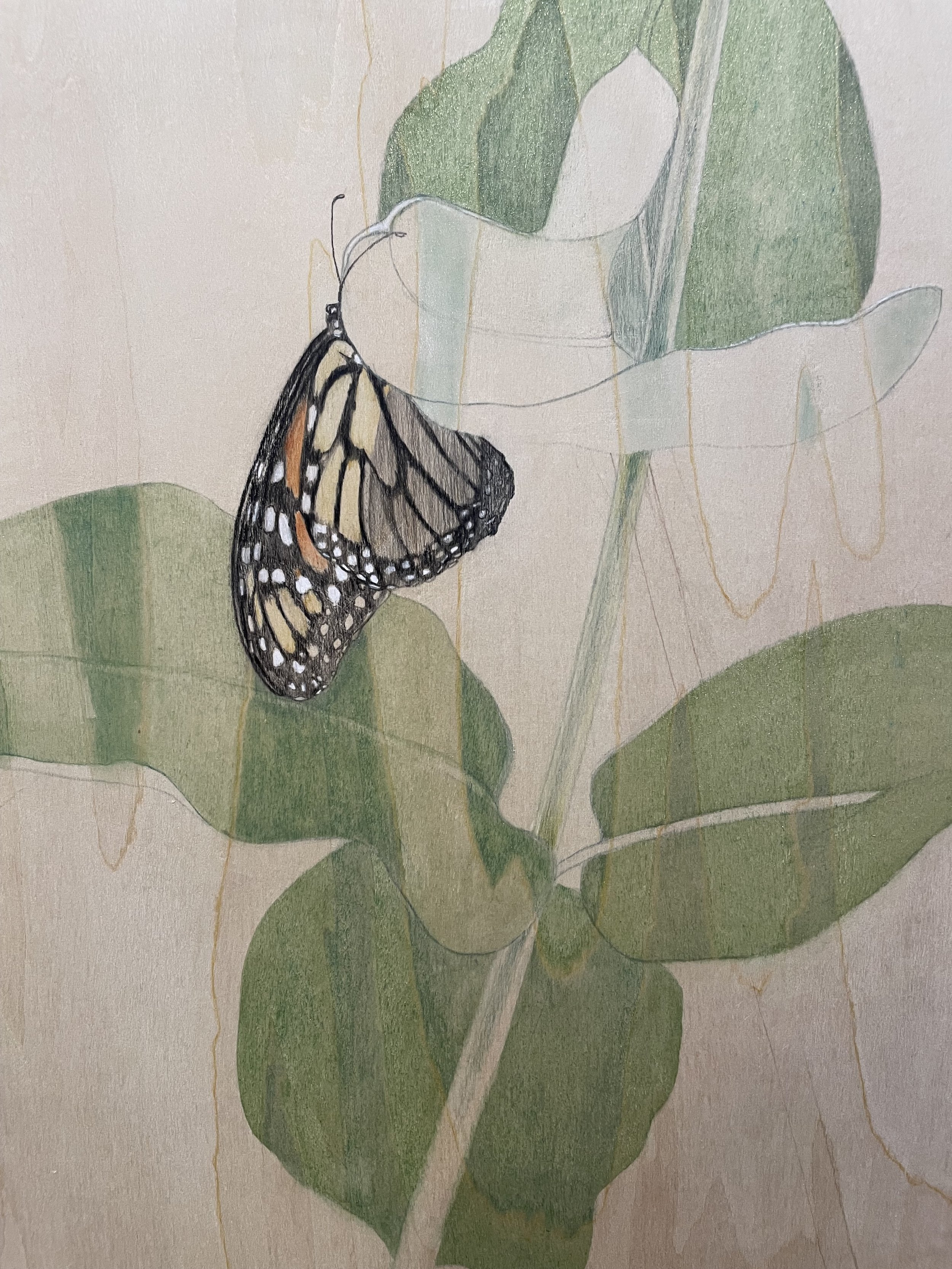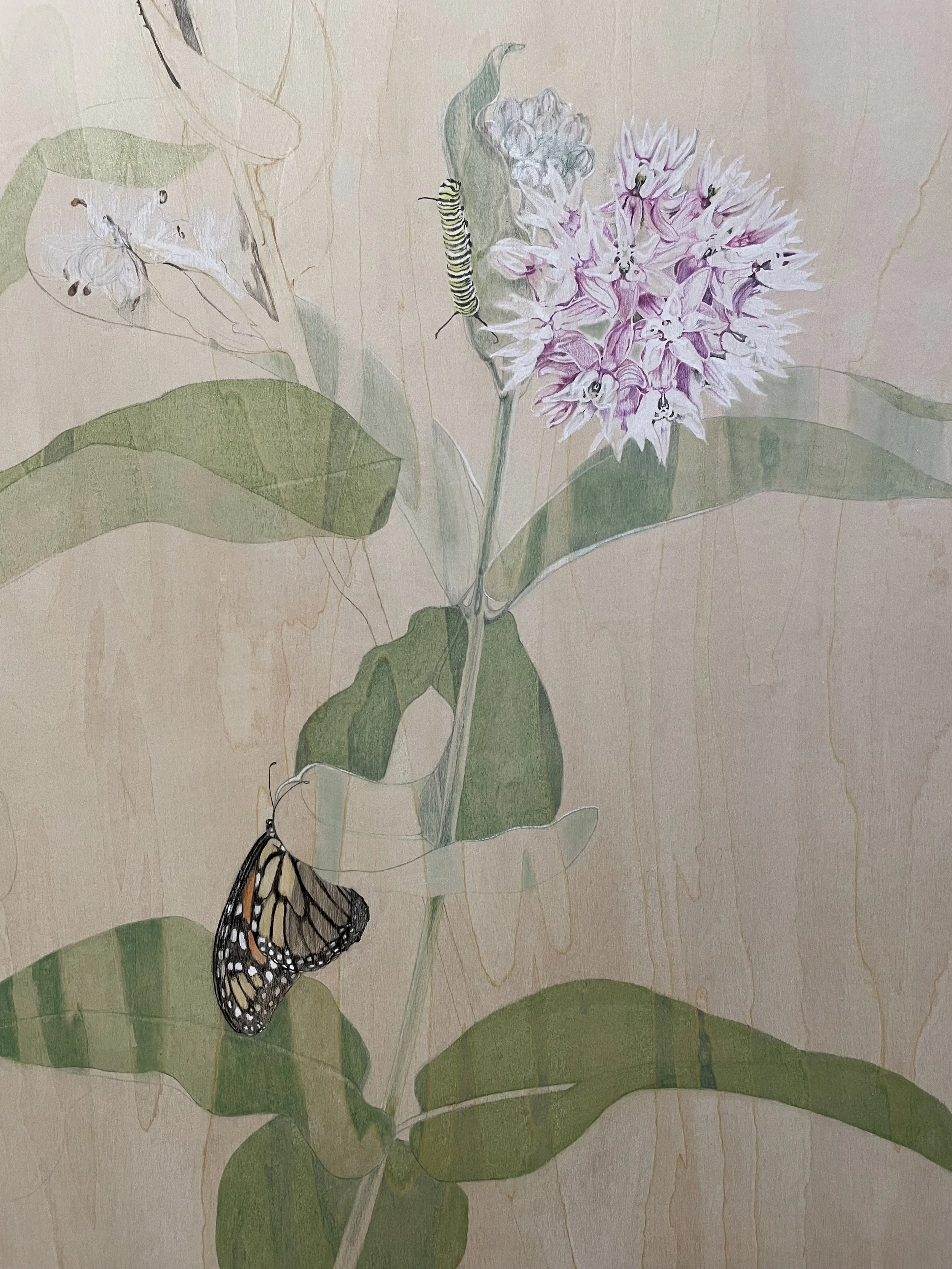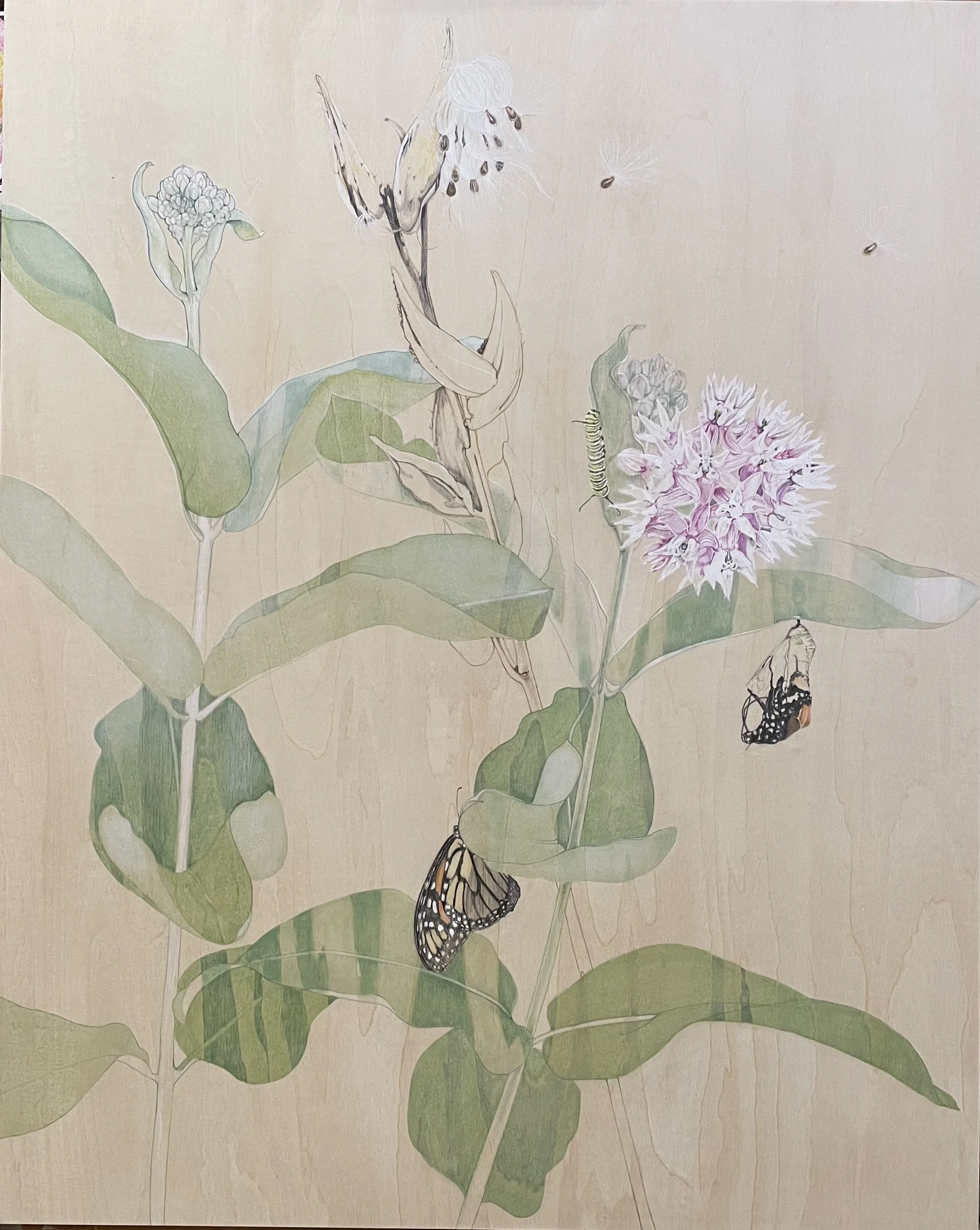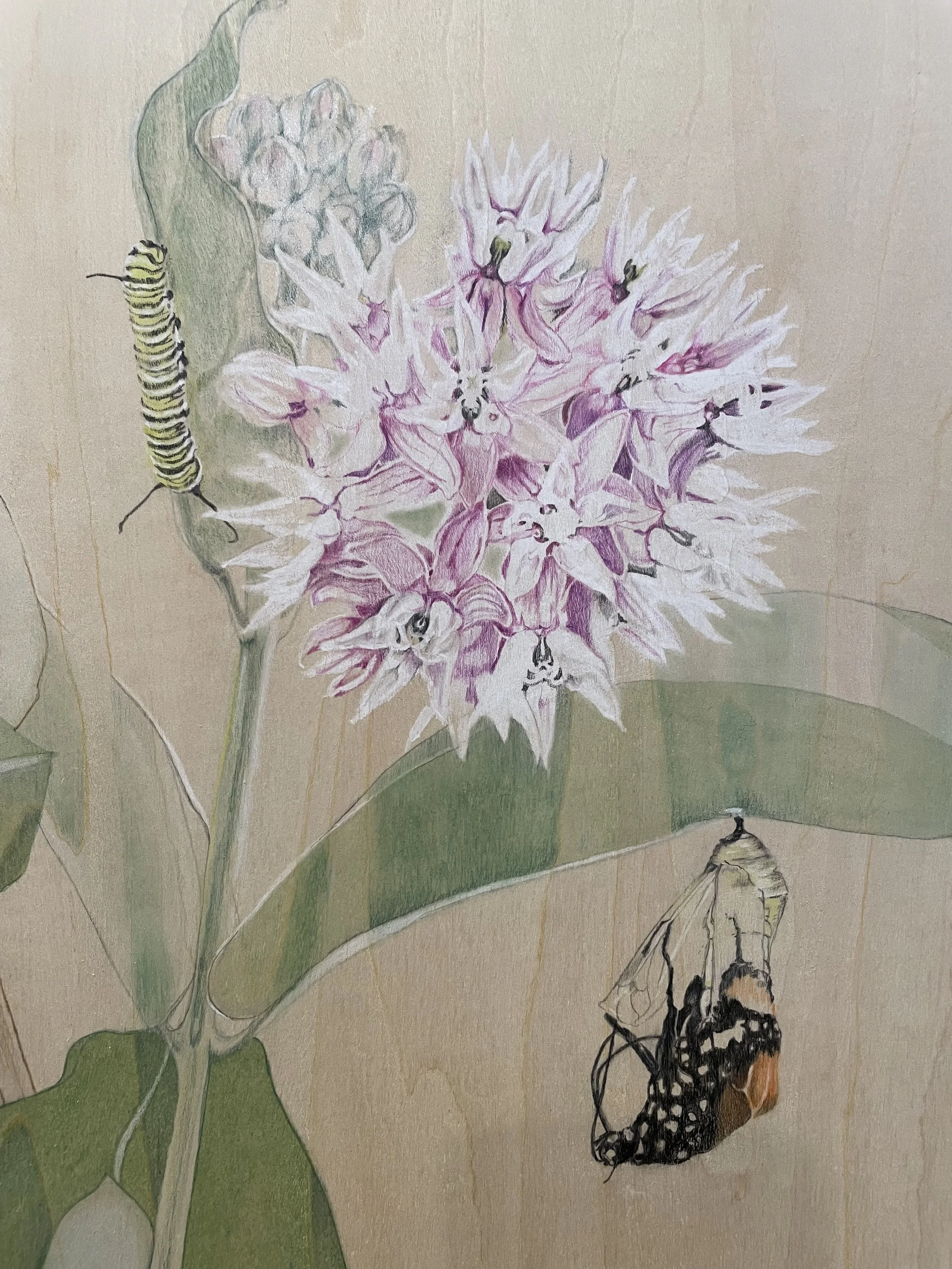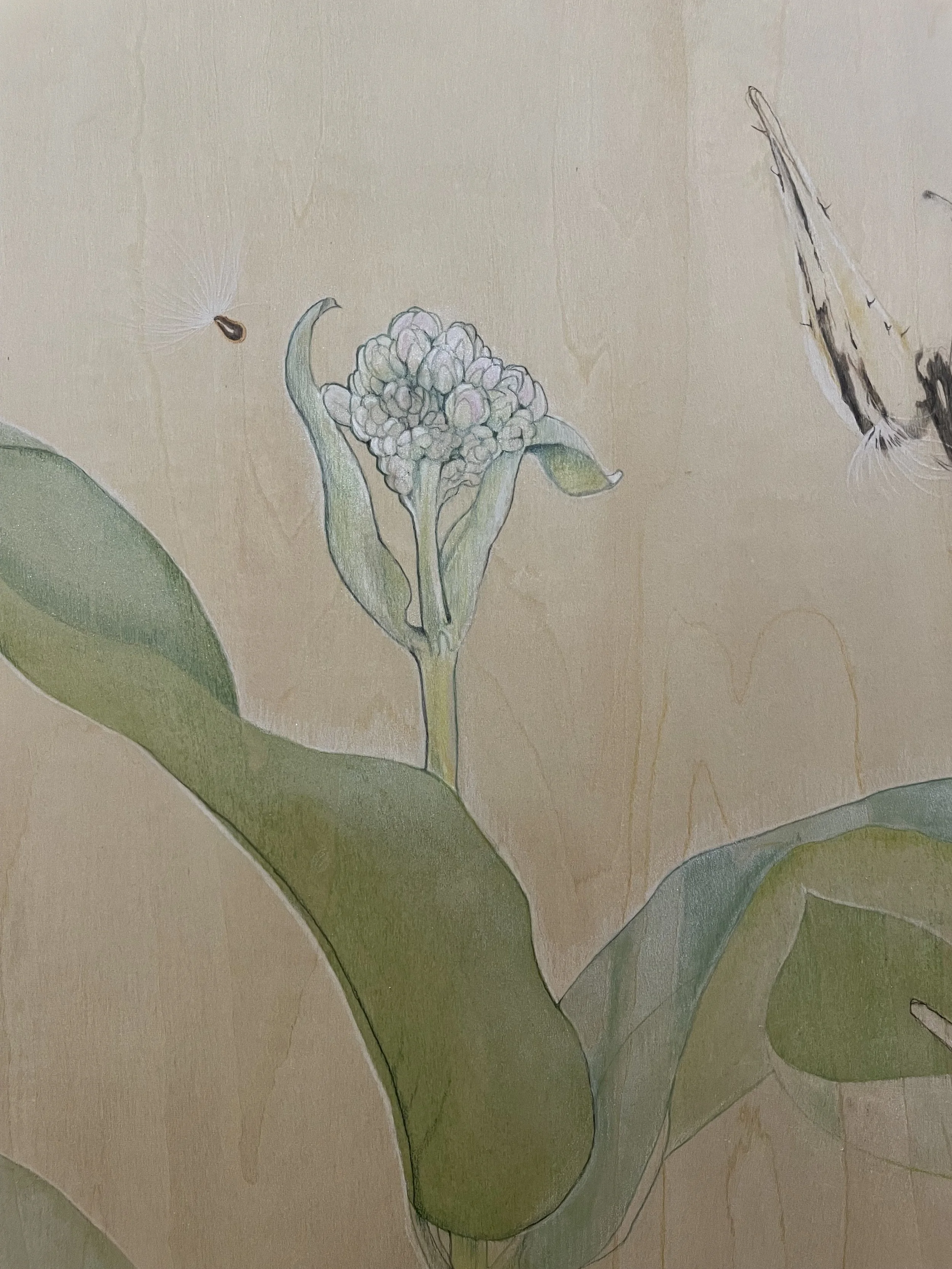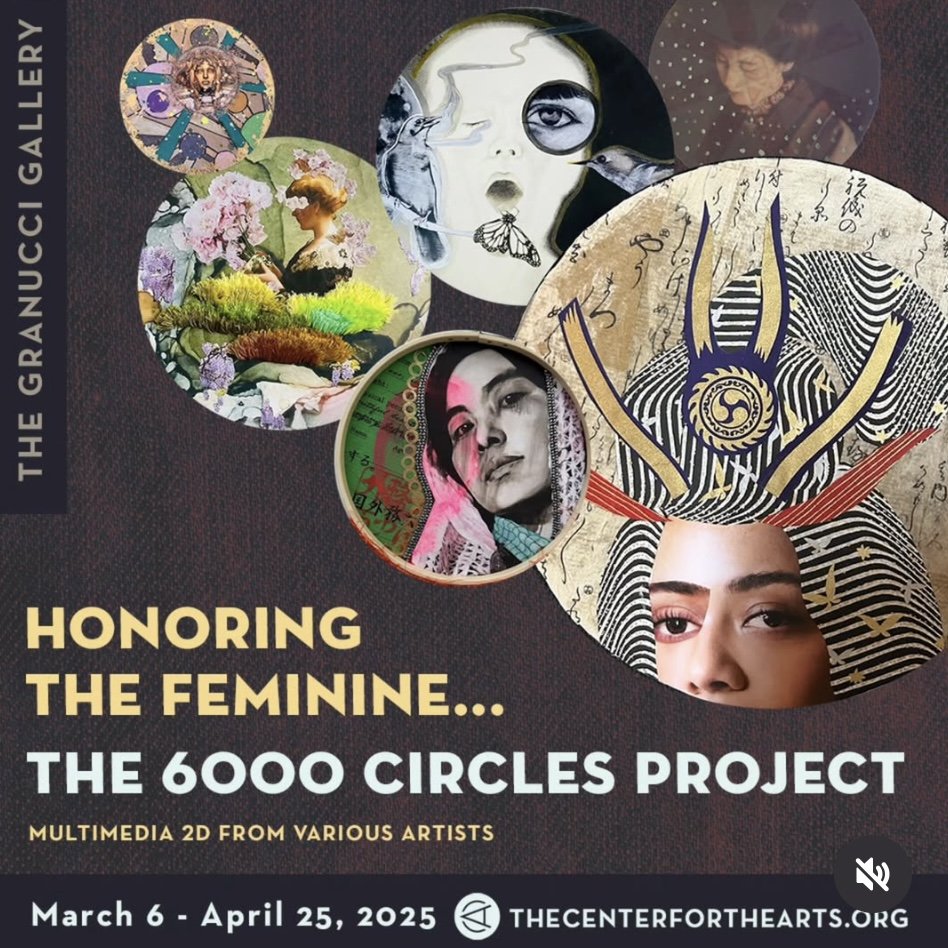Drawing Connections
An excerpt from my monthly newsletter from June 2025…
The news this month is largely a reflection on past experiences and how they have influenced, informed and inspired my work. I’ve also included some a few current experiences and a few resources to continue to foster hope, stay informed and take action. There is a through line of compassion and care for the creatures we share the world with and for the world itself that is the heart of my purpose. It has been with me for as long as I can remember, the drum beat of early childhood days spent playing outside on the edge of housing developments, where fringes of wildness remained.
I am sending this out today on this last day of June in honor of my mother’s 80th birthday. Born Linda Ann Chancey on this day in 1945 to Florence Inez and Howard Donald Chancey in Dothan Alabama. She moved around a lot as a child due to my grandfather’s years of service in the US Air Force and as an adult due to a few marriages to military men but has lived alone by choice in North Carolina for the last 35+ years. For the last 2 years she has resided in an assisted living facility due to advancing dementia. She is the last survivor of her family, my last elder and last living connection to our family history. My mom is and will always be my biggest fan. She fully supported me in my decision to go two fine arts colleges, helped me to pay for my education and filled her last home with my artwork and pictures of my family. My youngest and I went to visit and celebrate with her early this month. We made her a traditional southern poundcake with candles and a few handmade presents as well as California grown sugar snaps and cherries. I was taken by surprise as we sat around the table eating cake together when she spontaneously expressed her hope that I would have time to make my art.
Linda Metcalf’s 80th Birthday celebration.
Sharing some of my encounters with the Monarch Butterfly…
In 2016 I visited Natural Bridges State Park in Santa Cruz California and witnessed some of the Monarch migration. I’ve been using the photos I took there as reference for drawing them ever since. The gallery below features a few the works I created over the last several years focusing on the Monarch.
As an only child and only grandchild I spent a lot of time exploring alone outside. My people taught me to notice the sounds and sights in the surrounding landscape and to appreciate both its beauty and bounty. I spent the summers with my grandparents in northern Florida and we made several trips each summer to visit my maternal great grandmother in southern Alabama. I was maybe 4 or 5 years old when I was playing in my great grandmother’s garden watching a Monarch butterfly gracefully flutter among the Phlox and Lantana flowers. The air was hot and humid, resounding with the sounds of cicadas and the moment was filled with wonder and discovery, resonating with an underlying sensation of kinship.
Almost 20 years later on the road to graduate school in Illinois, I found myself stranded on the side of the road. It was a very hot August day so hot that the little gasoline remaining in the tank had evaporated. The year was 1993 long before personal cell phones were in everyone’s hands so I stood on the side of the road waiting and hoping for help. I began to look more closely at the space around me. Slowly I became aware that as far as the eye could see was the yellow gold of dead dry grasses. Then I noticed a small black shape in the grass and knelt down to look at it closer. It was a very sad moment as it became clear to me that it was the body of a dead monarch. I gently lifted it and held it in my hands. It was so light, fragile and lifeless. When I looked beyond my hands, I could see the grass at my feet all along the roadside in the median between the two sides of highway, and all the way across to the other side, the grass was littered with the bodies of more monarchs. I realize now this most staggering first hand experience, that we, humankind, have not been mindful of our actions, their impact on the environment and other living beings was a gift and set the course for the development of my work to this day. I took the monarch I had lifted from the grass along with me to school and drew it many times mostly as a means of integrating and memorializing the experience in my great grandmother's garden as well as the tragic scene along the Illinois roadside. It remains in a jar on a shelf in my studio.
Contemplating Loss, Drawing with Mixed Media and Collage (36”x 48”x 2”) with surrounding wall decals (60” x 72”)
photo credit: Shannon Kelli Pictures
Prayer for the Western Monarch, Mixed Media Collage (20”x 20”x 2”) with surrounding wall decals (20” x 56”)
photo credit: Shannon Kelli Pictures
Milkweed for Monarchs, Drawing with Mixed Media and Collage (36”x36”x2”) with surrounding wall decals (42” x 96”)
photo credit: Shannon Kelli Pictures
New work in progress: Showy Milkweed, Colored Pencil and Pastel on Plywood Panel
May News
Drawing Connections
Truth be told, I procrastinated for years before finally committing to send out a regular newsletter last month, so, you can imagine my surprise when I realized, in those first moments after hitting 'send,' that I had just inadvertently created a structure for my studio practice – an unforeseen way to become regularly accountable to my drawing and writing practices and even prioritizing exploring new landscapes. Hmm. The thing I had felt so unsure about has transformed into something that can help me prioritize what I really want to be doing myself and my time. Well, I’ll be damned. I hope you all will find something here that feels useful or generative for you and what you love.
This new monthly practice has also helped me to get back on the path of following a larger vision to build a deep and diverse collection of drawings depicting the animals, plants and insects. I imagine this as a library of sorts, where each species adds another facet to the visual vocabulary for the stories I am compelled to tell – stories that explore the genuine connections I witness and learn about, as well as the imagined relationships that arise through play and ideation. Each drawing represents and individual form of life and my plan is that through reproduction processes like the printing of archival prints on paper or wall decal fabric that I can work with my own imagery to create intricate and immersive works of art that bring to life both real and imagined narratives of connection.
It is all too easy to get thrown off track so I am very grateful to have this new form of sharing my work that provides a way to measure and share progress overtime. Over the next several months I will be organizing the drawings and stories of the species I have already drawn.
New work in progress: White Tailed Deer, Colored Pencil and Pastel on Plywood Panel
I often have experiences with animals and sometimes plants that feel significant. Sometimes these encounters feel like gifts of beauty, sometimes like messages or signals and I feel an obligation to honor them. Drawing is for me a profoundly beautiful way to spend time with and get to know my subjects. In the first days after sending out April's newsletter, I felt an opening, a reason to begin and started looking for images to work from. The white-tailed doe has been on the my need to draw list for some time now. I found a beautiful reference photo by Thomas Park on Unsplash. The initial drawing began with a gestural sketch to lay out the whole figure. I video recorded the intial hours of the drawing process that followed and posted a small sample on my News and Events page. I began writing the story of the encounters that led to this drawing in September 2023…
I have passed the still lifeless form of a deer on the side of the highway too many times while driving back and forth between my mother’s home, the hospital where she is recovering after a fall and the assisted-living facility I am in the process of moving her into. It’s always disturbing to me to see the bodies of animals strewn about or worse on the roadside. It seems so unfair that we’ve taken over so much of the land with roads that interfere so significantly with the movement of other species. The deer’s body was a difficult reminder of the tragedy of these consequences and triggered the grief I’ve been holding as I manage the obligation of caring for my mother since she was diagnosed with dementia in late 2019. For the last several days I’ve been going through my mother’s belongings deciding how to furnish her room. Yesterday as I was loading another car full of her furniture to continue setting up the space that will be her new home, a fawn jumped the neighboring fence and ran through the land immediately surrounding the house. I didn’t see, couldn’t locate the mother if she was there. Later, as I was driving the car loaded, I noticed a pair of female deer that were trying to cross a very busy stretch of a two lane road from a narrow wooded corridor . I stopped for them, but they turned and ran back into the trees. Looking into the rearview mirror, I saw them attempting to cross again, hesitate and return to the woods. I had to pull over and turn around. I felt I had to help them if I could. As I was headed back towards them they made another attempt. I slowed and stopped, halting traffic behind me, waving my left arm out of the window and flashing my headlights to try and get the oncoming traffic to stop as well, hoping to create an opportunity for the two to cross safely. The oncoming traffic did not slow enough and they turned away again. I slowly started moving forward again and pulled over just beyond the wooded area to wait. I needed to see them cross. I sat watching for a few minutes until the traffic paused and one of the deer came out to test the crossing. She cautiously pawed at the road, bent down her head, seeming to smell its surface, raised her head again and turned to glance back at her counterpart. They moved together to wearily cross the pavement and made it safely across, disappearing into the opposite tree line. The two of them were for me a representation of the two of us, my mother and I. I am the doe guiding the way, testing the road as I try to lead her to safety.
This small experience of feeling compelled to do something, then stopping and at least trying to do something is a microcosm of the persistent need I feel to witness and understand the vulnerable beings around us. My work revolves around this need and I am trying to learn how best to take action. For now, I am continuing to draw as well as make my way through the book I mentioned finding last month, “Crossings, How Road Ecology is Shaping the Future of Our Planet” by Ben Goldfarb. So far it’s fascinating and informative, relaying poignant stories about the origin of road ecology and all the human efforts that have gone into trying to create safe passage for animals almost since the very first roads were constructed.
April News
Hello All!
I’m excited to be sending you the first email of a new monthly email communication sharing news and events related to art and the environment. In other words a newsletter. Each month I will share a piece of recent work or work in progress, along with information about its creation and context as well as news about exhibitions and events. I hope this will be a welcome and inspiring distraction from the news and events of the world at large.
Work in Progress
Work in progress: Barn Owl
On the Road | January 2025
The early January drive north to the Museum of Northern California Art, where I was to install two new works for their "Birds, Birds and More Birds" show, began with the quiet beauty of the winter landscape. The grasslands and wetlands flanking the road were stunning and an astounding view of hundreds of snow geese in the air prompted a spontaneous visit to the Sacramento National Wildlife Refuge – more on the vibrant life I witnessed there below – but the tranquility of the journey was soon shattered by a deeply troubling sight. I began to recognize and tally the barn owls and other birds of prey lying still and awkwardly prone along the roadside. Eight barn owls. I counted at least eight that day. The sheer number of these fallen creatures left me stunned and profoundly saddened. In an attempt to process this loss and perhaps honor their lives, I began to draw a barn owl. It's still a work in progress, but I feel privileged to be getting to know this beautiful species through the intimate act of drawing. This experience has also led me to seek out more information on how human infrastructure impacts wildlife, which is how I discovered a new book called "Crossings, How Road Ecology is Shaping the Future of our Planet" by Ben Goldfarb. My copy arrived today, and I'm eager to learn about the innovative ways people are working to improve our coexistence with all life on Earth, like building bridges for California Mountain Lions. Yet, the question of how we can effectively protect our avian species and the vital insect populations ways heavily on my heart and mind.
Sacramento National
Wildlife Refuge
January Wolf Moon Rising at the Sacramento National Wildlife Refuge
Great Egret taking flight at the Sacramento National Wildlife Refuge
My first visit to the Sacramento National Wildlife Refuge on January 13, 2025 unfolded like a surprising journey into a protected wetland paradise, with the offering a slow drive along a winding gravel road. As the sun began to set on the western horizon the full wolf moon rose on the east, it was a thrilling experience to be in such close proximity to so many birds, observing their natural behaviors without feeling like an intrusive presence. The majority were the migrating Snow Geese, gathered in animated flocks throughout the wetland area. The refuge was brimming with numerous other species, many of which I'm still learning to identify, and it was a joy to see familiar birds like the red-winged blackbird and Great Egret thriving in this remarkable landscape.
Now on view at the Grass Valley Center for the Arts…
Exhibition announcement for the 6000 Circle Project at The Center for the Arts
The 6000 Circle Project, focuses on the circle as a symbol of balance and unity, a never ending container of feminine energy and light. The Calling collaborative including myself, Chantelle Goldthwaite and Yasmin Lambie-Simpson created this project that gives artists and non artists alike license to participate in a variety of ways with only two non-negotiable parameters to the project: that the substrate for the images was circular and the art responded to the theme of feminine energy.
The circles currently installed at the Center for the Arts, March 9 through April 25, were created by a multitude of artists, of all genders, from around the globe, both groups and individuals, gathering and making. There are over 500 circles that reflect an immense variety of stories and knowledge about individual and collective experiences of the feminine journey, energy and leadership. All donations and proceeds from the sale of circles will be donated to the Neighborhood Center for the Arts in Grass Valley.
The 6000 Circle Project is an ongoing collaboration honoring the feminine. If you’d like to learn more and participate please click the button below to visit The Calling page on my website.
Sharing a new way to connect with and collect my work…
I've finally taken what feels like a rather brave step and opened an online shop on my website. Putting my work out there for purchase in this way feels a little vulnerable, but it's a necessary move as I work towards building more support for my studio and artistic journey. This shop is just beginning, a work in progress that I'll be developing over time. If you're curious, please click the Collect button below to have a look. Your support and appreciation mean the world.
I gratefully acknowledge that my studio in South Berkeley is located on the unceded territory of the Chochenyo Ohlone people. I recognize their deep and enduring connection to this land and offer my sincere respect to their ancestors, elders, and community members today. As a way to give back and honor this land, I am proud to donate a percentage of every sale to support Indigenous communities and their cultural preservation and self-determination efforts.

